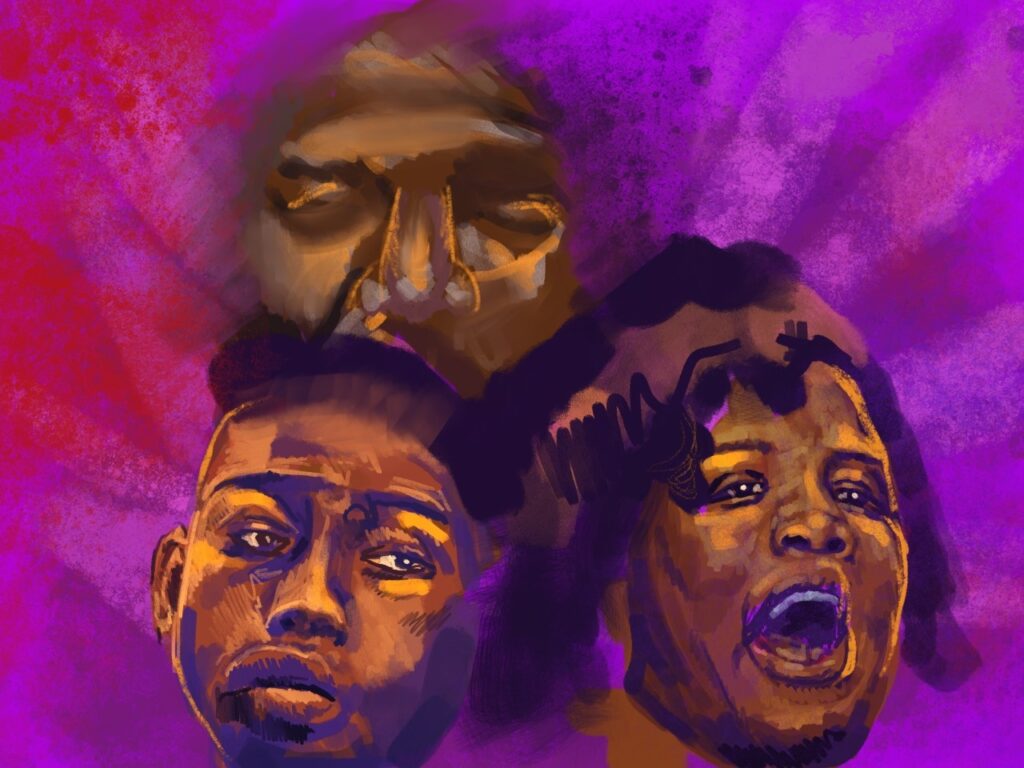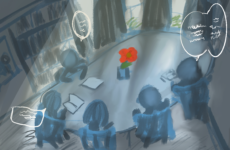
Graphic by William Gao/The Choate News
I love my American Studies class. But, for the past three months, the course has taught me fewer lessons on U.S. history and literature than it has on the compartmentalization of trauma. Between September and December, I spent numerous hours every week — both in and out of class — writing, analyzing, and reading about the horrors of the American institution of enslavement.
In all these months, it was rarely apparent to me that the wellbeing of the only two Black students in the class was prioritized as we engaged in discussions on the brutal conditions of slave ships and the commodification of Black bodies — debates on the basis of our African-American humanity that had to be neatly wrapped up at the end of a 70-minute period. This is why we, as students, but more specifically, Black students, are in desperate need of more Black teachers — for the sake of our education, our futures, and our overall well-being.
Over the past two terms, it’s grown exhausting to see the issue of anti-Blackness treated as an uncontextualized moment in history rather than the force that permeates through and dictates my every decision. Yet, it’s not completely the fault of the class or the teachers, both of whom make an effort to sympathize with the Black experience. How can anyone be expected to consciously dissect a complex system that they’ve never had to understand in its totality? How can a teacher be expected to adequately support a student whose experiences differ so much from their own? Despite the efforts of a handful of dedicated white teachers, the bottom line is that it’s a nearly impossible task; it’s impossible to compensate for generations of racially entrenched experiences.
I’ve felt that in history classes at Choate, it often feels like we, as students and teachers, fall into the trap of believing that our classroom culture is not predicated on race. While the majority of the community seems to recognize the implications of race on everyday life, race is a part of our identities that becomes easy to overlook after becoming friends with someone. When you’re sitting around a Harkness table with students of diverse identities, it’s easy to believe that the School has succeeded in creating an inclusive environment.
But, consider all of the things that aren’t said — the controversial takes, the difficult emotional responses, the questions that tread the line between learned and ignorant. It’s a shared experience for students of color to bite their tongues when they see their heritage inaccurately portrayed in history, especially when there’s no one in the classroom to back them up. Without being able to provide the appropriate context for others to understand your perspective, you resign to saying nothing at all.
Because of the way my schedule worked during the fall term, my Wednesdays consisted of three classes in the same classroom, all of which discussed the same period of early American history. I loved these classes, primarily because of how passionate and engaging my teachers were, but a couple of weeks in, I realized that it wasn’t emotionally sustainable for me to take three classes with a heavy focus on the roots of American racism. It wasn’t sustainable for me to dread Tuesday nights because I’d have to read hours of impersonal texts all trying to draw lofty conclusions that have been basic facts of my existence.
It’s not that I found the history particularly surprising or shocking, but in learning its nuance and really understanding the systems upon which the country was built and still stands, I clearly saw the ways in which very little has changed. While the class is aimed at studying the past, the literature we read and the art we study doesn’t feel too far removed from the present. In class, we discuss historical figures with the same tone that we would discuss citizens of an ancient civilization.
So, to survive Wednesdays, I compartmentalized and continued. To remain a participant in these classes, I had to disregard the emotional aspects of my education and simply accept what we were learning as objective truths.
A 2016 poll, conducted by American University economics professor Seth Gershenson, found that white teachers are 40% less likely than their BIPOC colleagues to predict that their Black students will complete high school. Not surprisingly, it’s 29% less likely for a Black student to drop out of school when they have a Black teacher. For Choate’s 896 students, there are six Black classroom teachers, not one of whom teaches U.S. history. To hire more Black teachers would be to affirm Choate’s promise to support the academic pursuits and emotional wellbeing of all students — especially students like me, who, because of their race, have never felt wholly comfortable in a Choate classroom.




